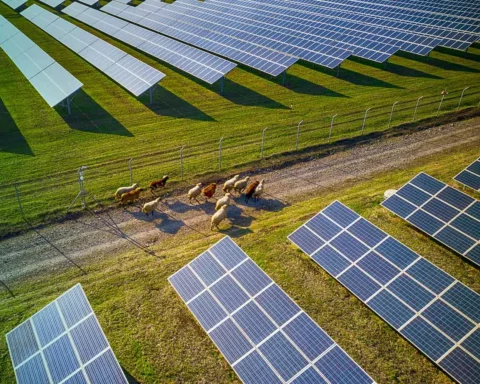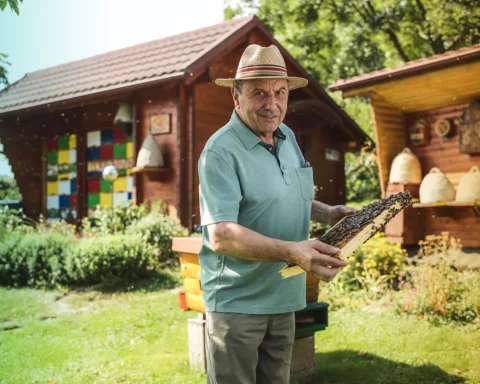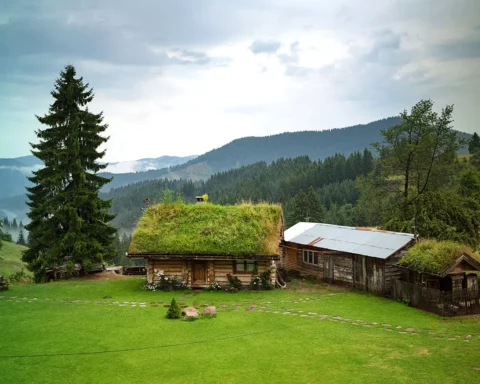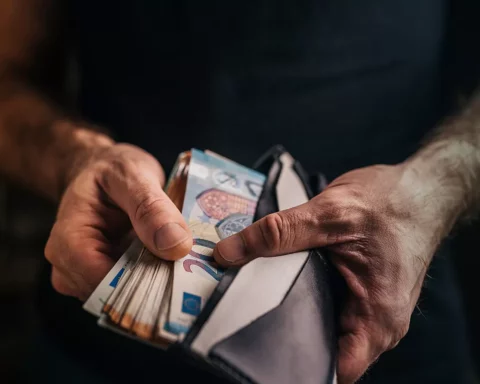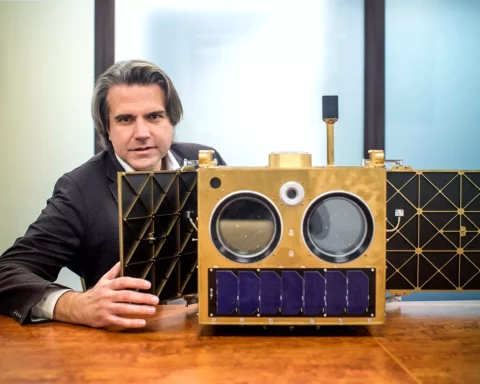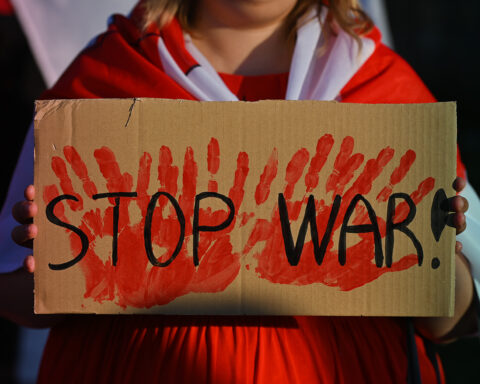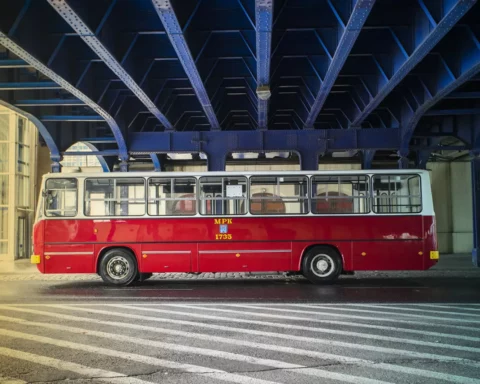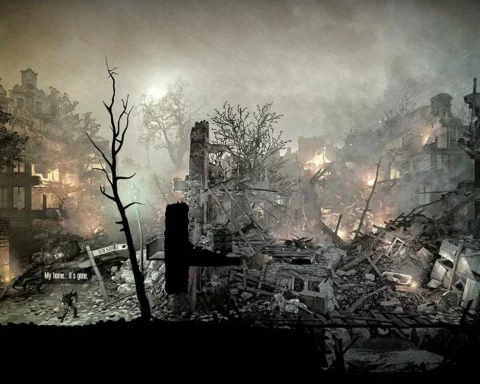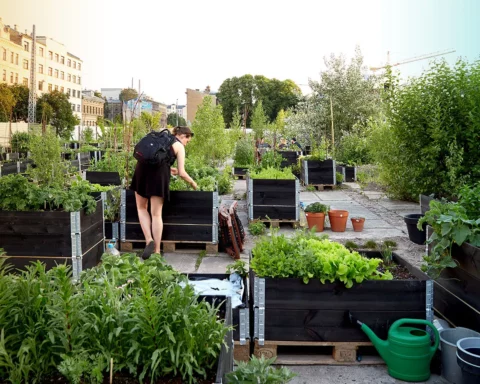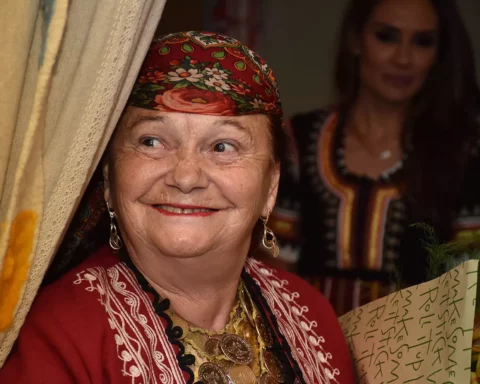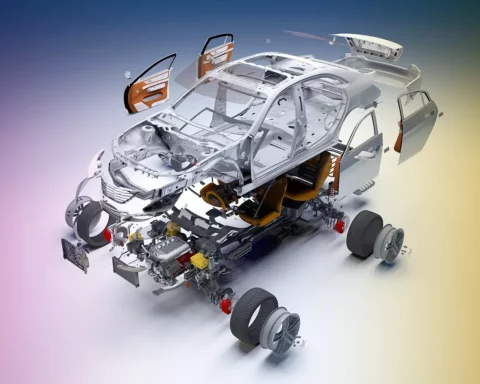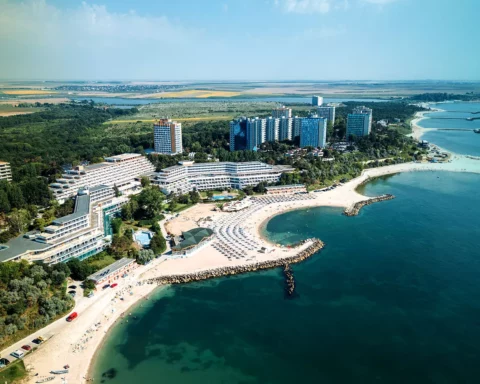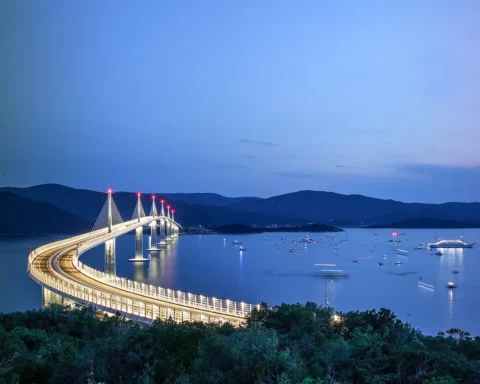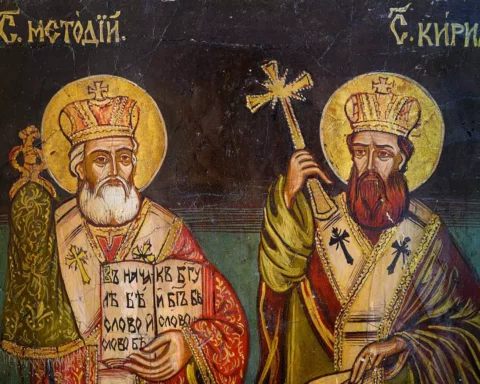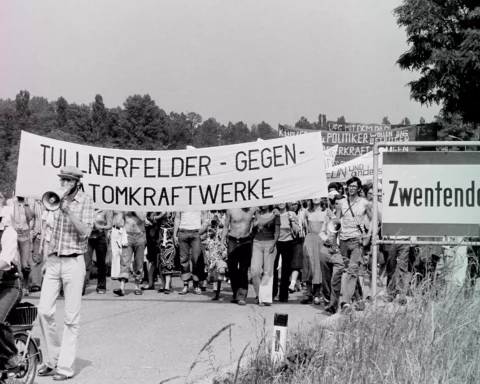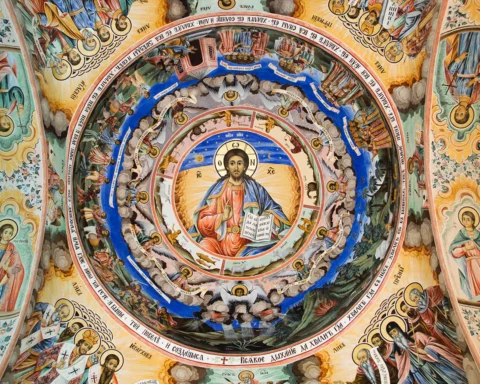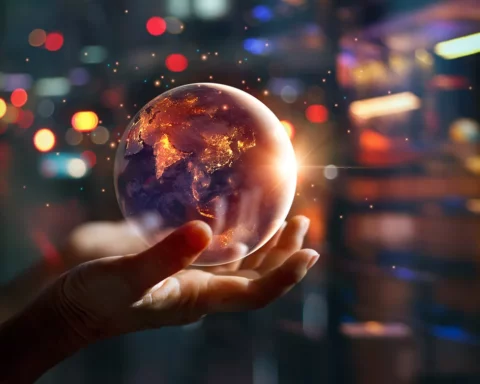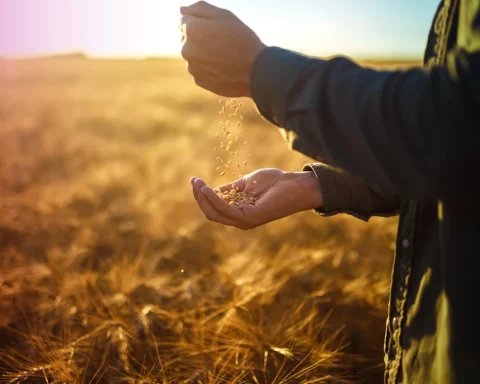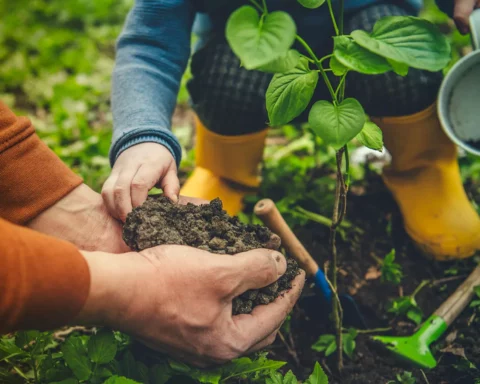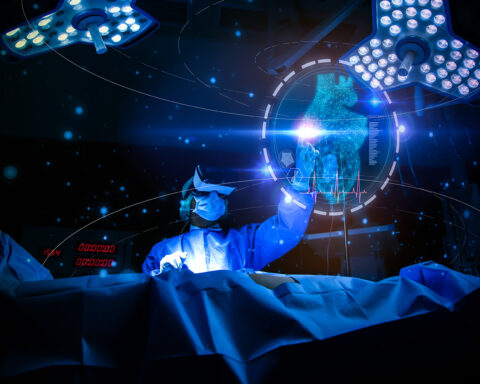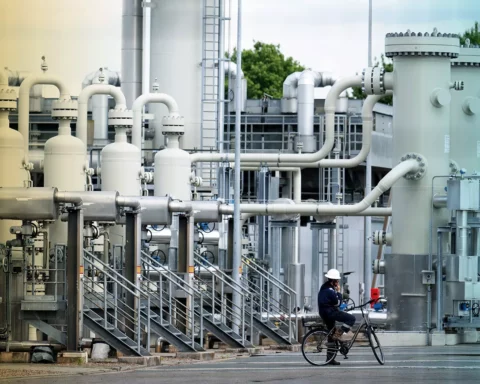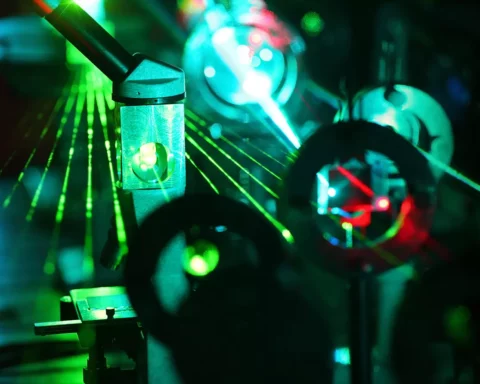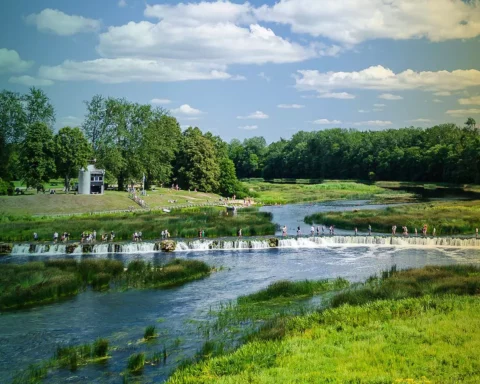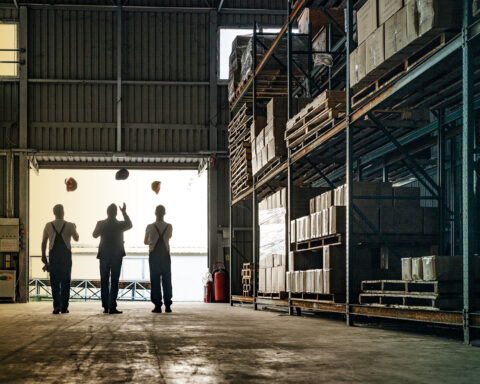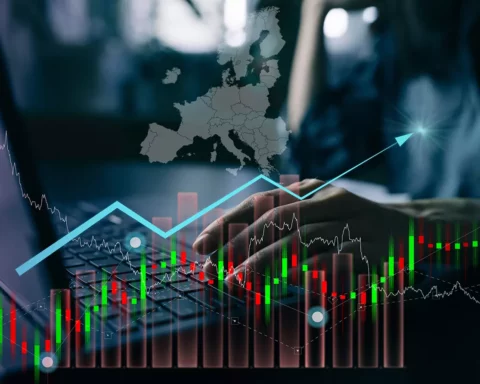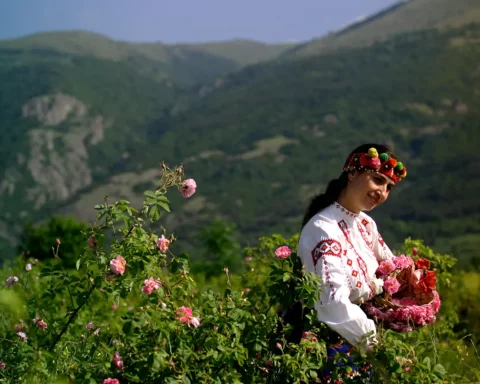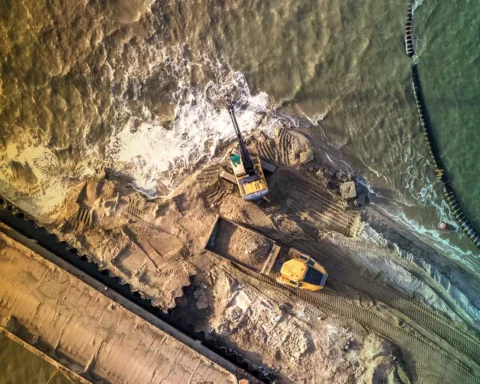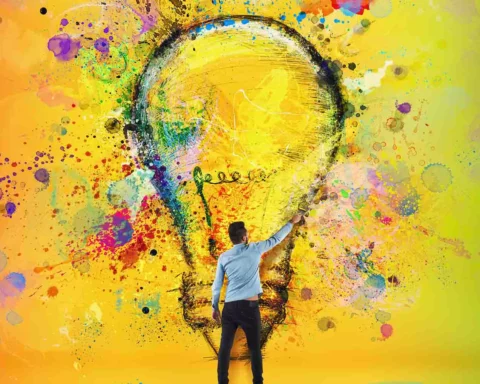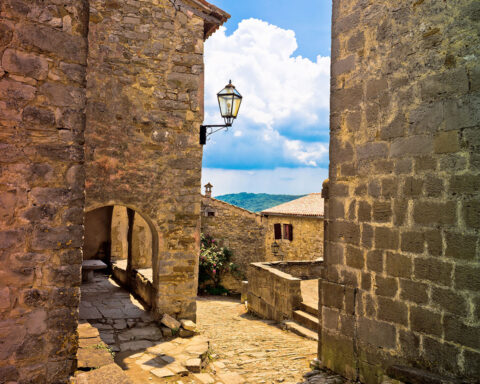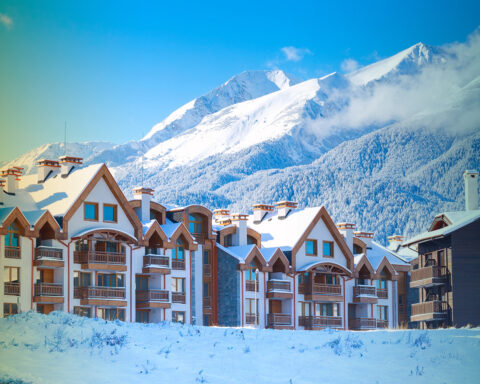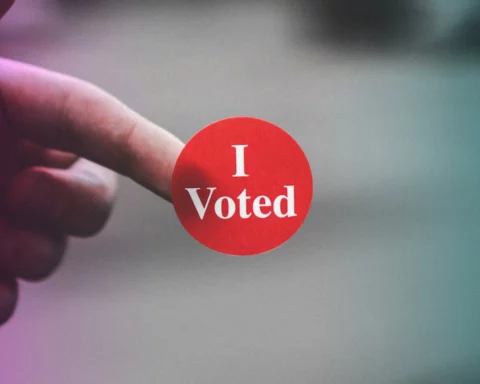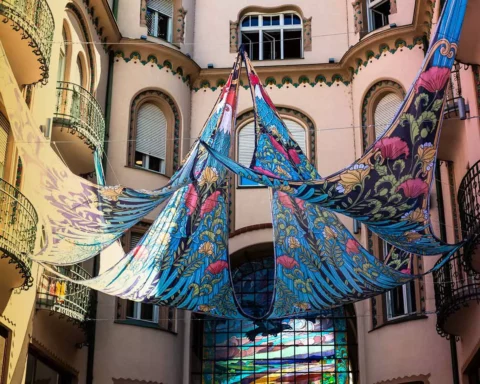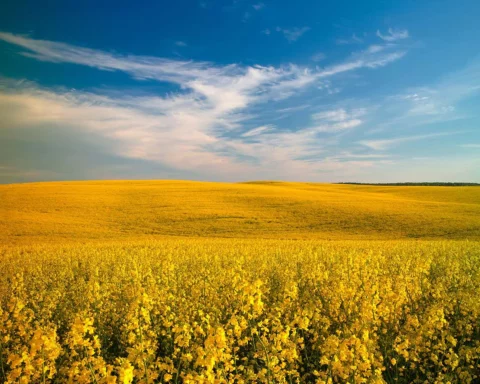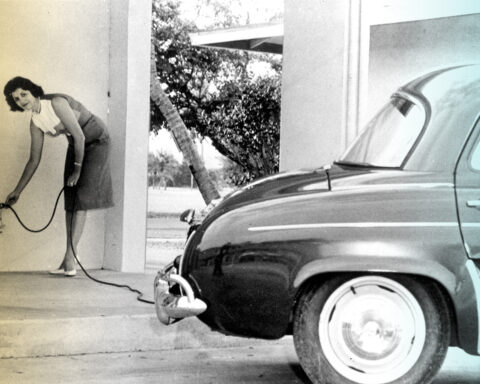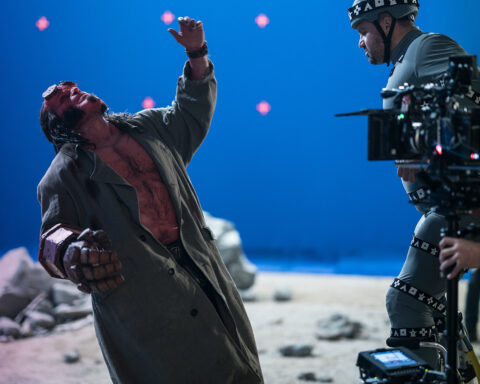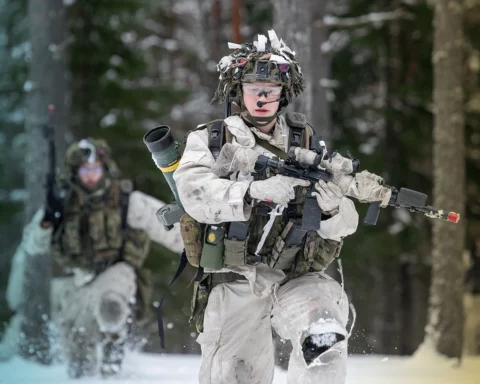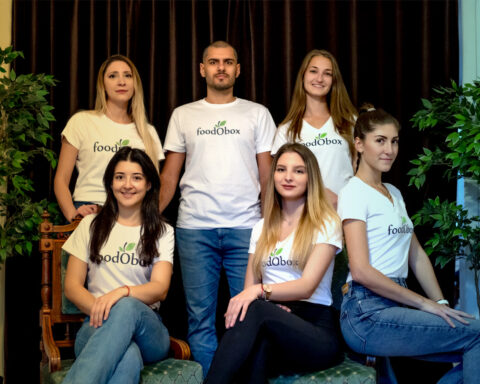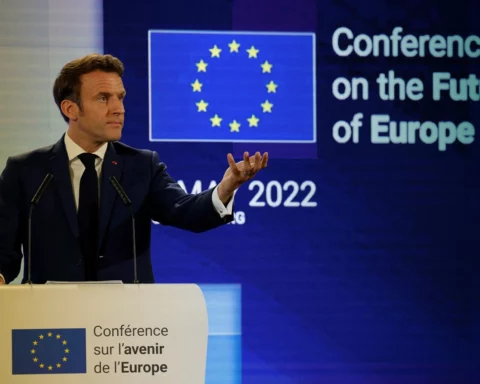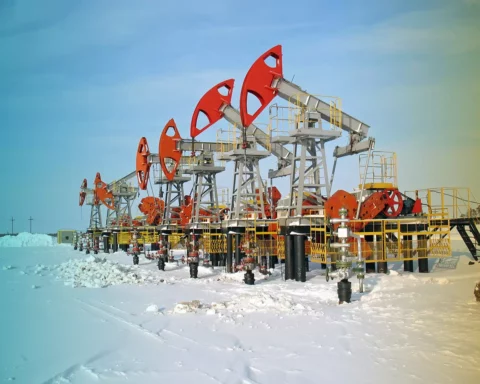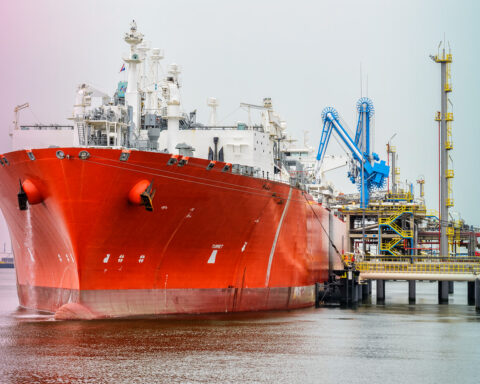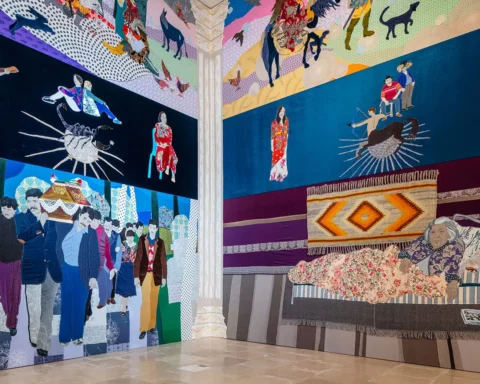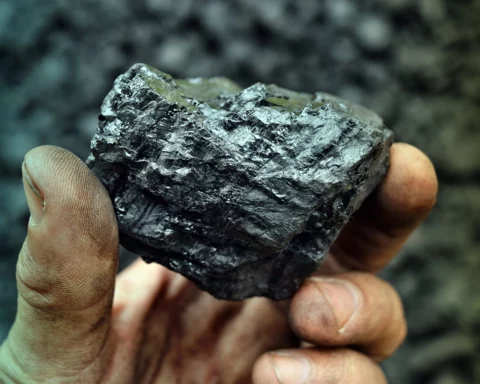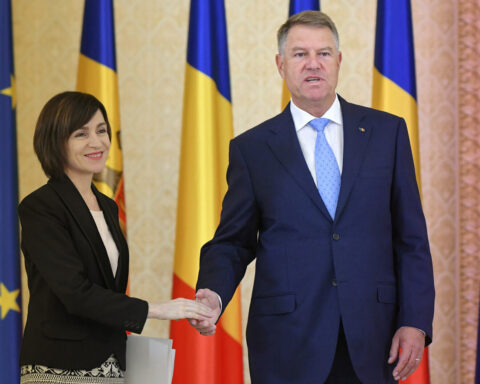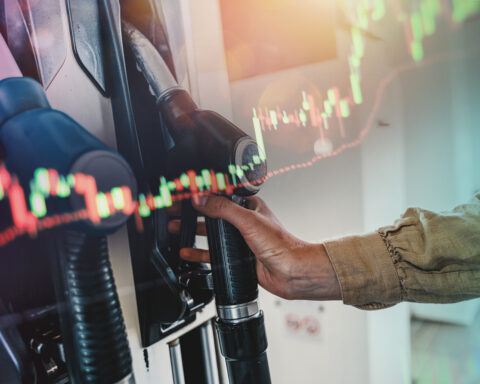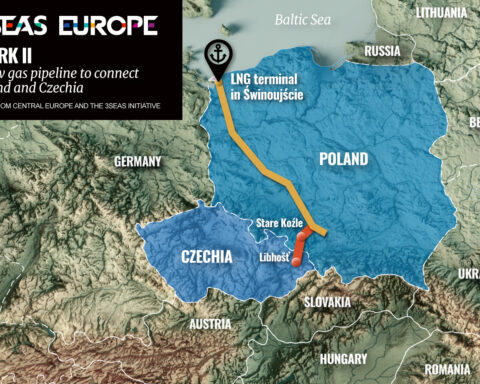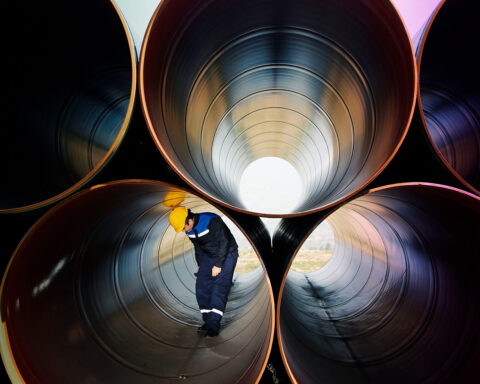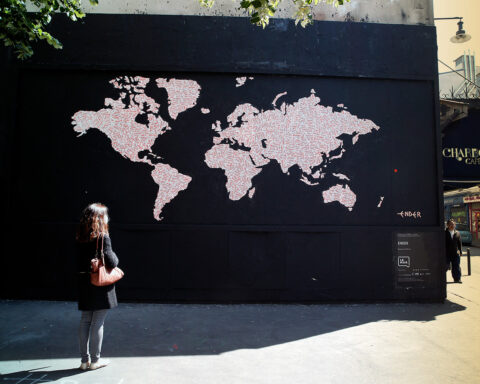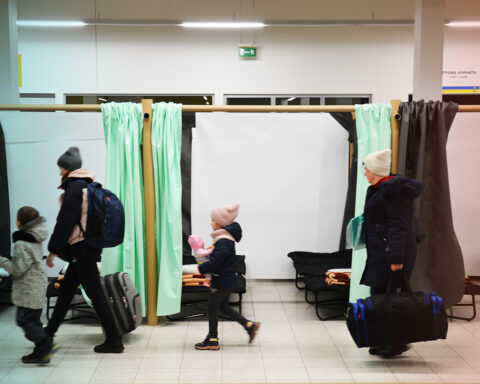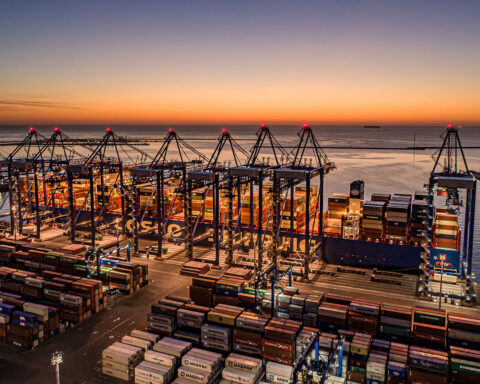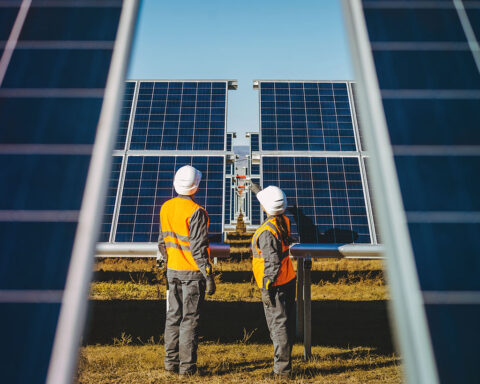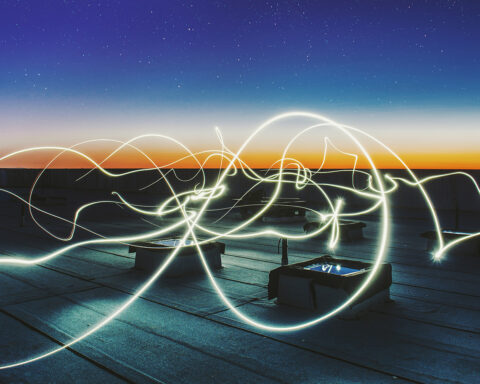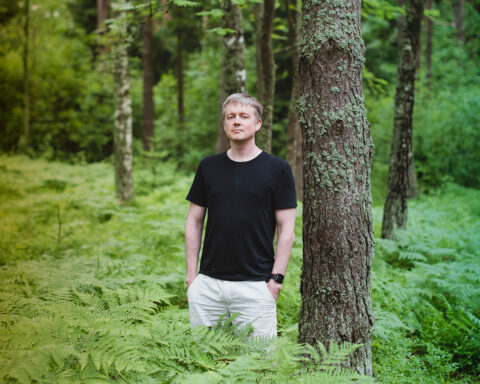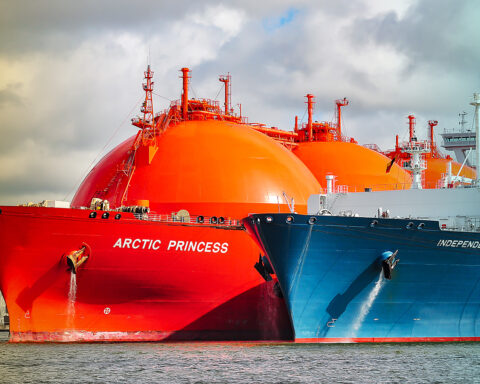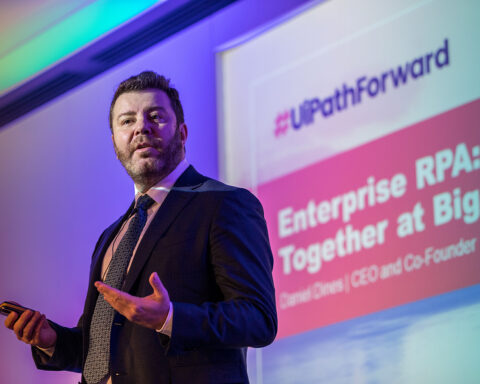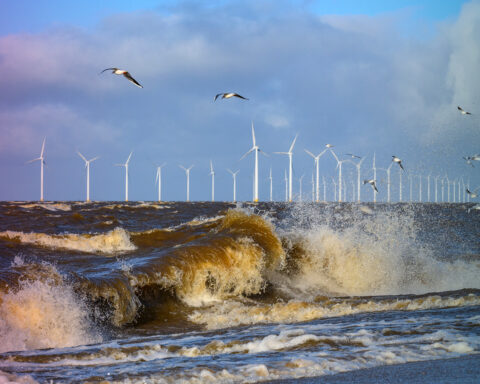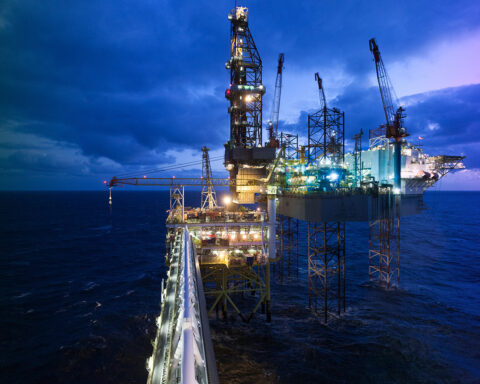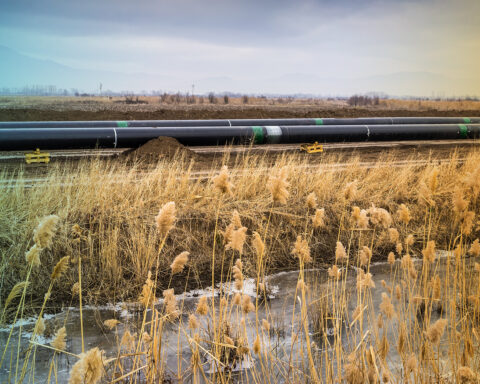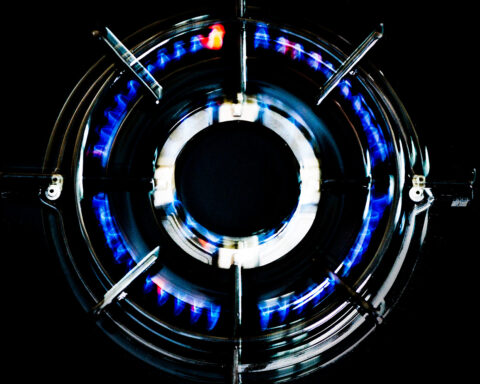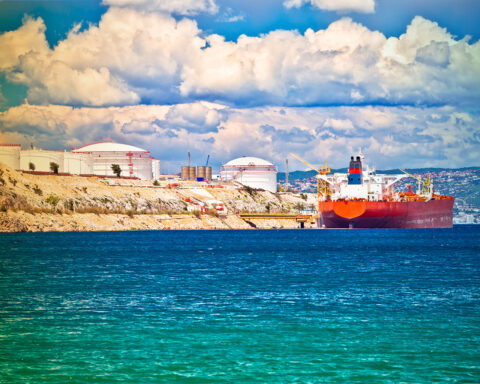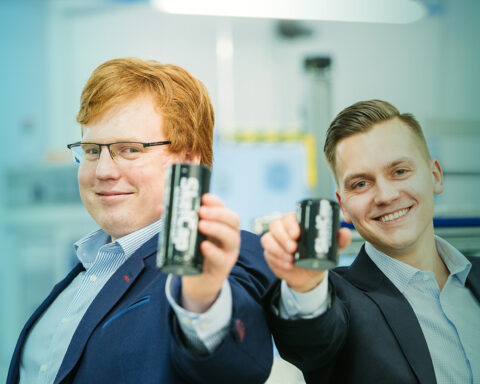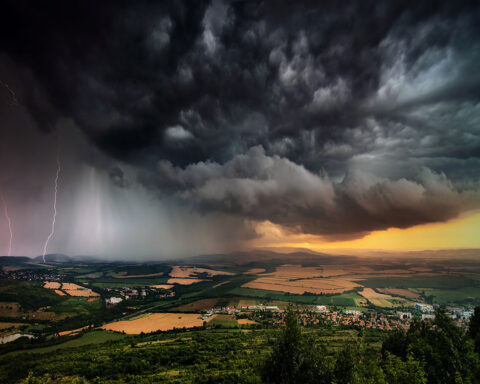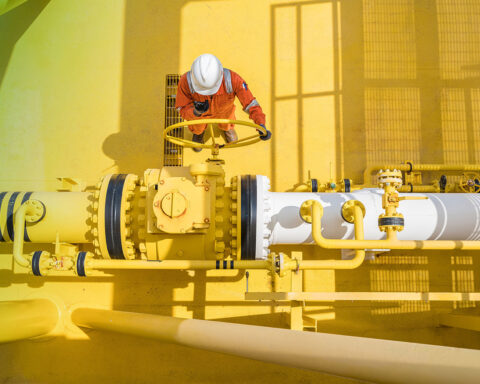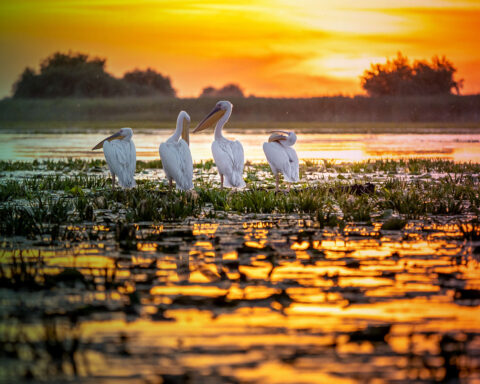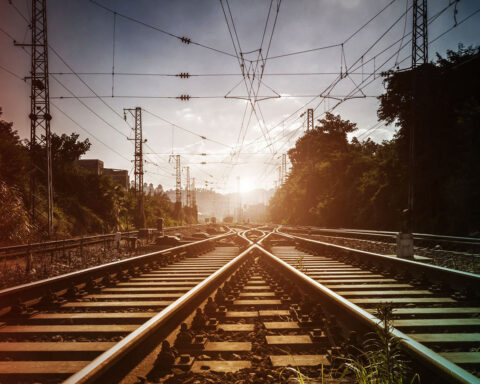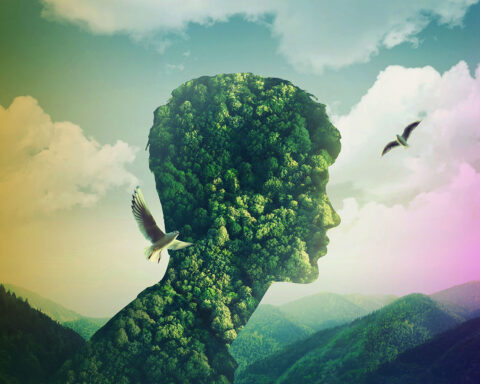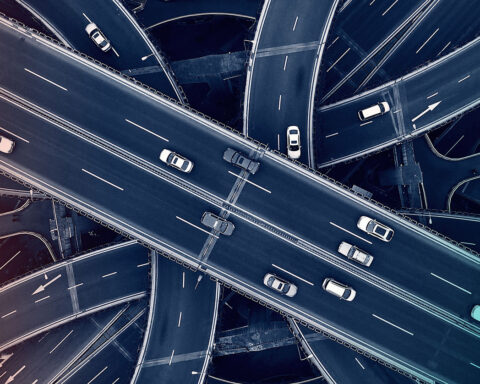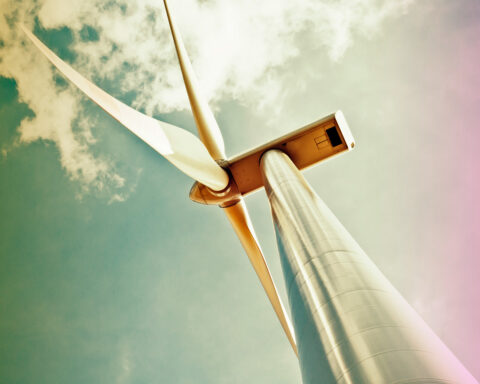With 240 sunny days a year, Bulgaria is well-positioned to harness the full potential of solar energy. So what is missing?
Slovenia is literally flowing with honey. Since the 11th century, beekeeping has been an essential part of Slovenian culture, an inspiration for art and design, and the backbone of local tourism. Professional beekeeping is so rooted in Slovenia that one in two hundred Slovenes is a beekeeper.
Centuries-old houses, lush greenery, friendly neighbors. If this is your idea of the average small Bulgarian village, you might be right. But if you want to experience life in one of these villages first-hand, hurry. Because the Bulgarian towns and villages as we know them might be dying out.
Most of the Three Seas countries are not heavily indebted. However, they are importers of capital, which must be taken into account when making economic policy decisions.
It would be an understatement to say that Polish company Creotech Instruments has been moving at light speed since its founding in 2012. The company has grown from startup to space giant in a mere decade, with plans to go public on the Warsaw Stock Exchange this summer.
For many years Europe has been deeply divided over attitudes to war. Russia's aggression in Ukraine showed that Central European countries were more realistic about the risk of armed conflict.
Thanks to a combination of the Eastern Bloc’s economic structure, effective export deals, and last but not least, great products, Hungarian bus manufacturer Ikarus was able to dominate the Eastern Bloc’s transportation business - and even some of the West’s, too.
The RPG game “This War of Mine” about civilian life in under-siege Sarajevo was the first videogame in the world to ever make it into school curriculum.
What to do with an overgrown piece of land in a bustling capital city whose residents live mostly in apartments? One active community in Riga founded urban gardens, illustrating the potential of transforming derelict plots into added value for a city.
In 1977, a vinyl record featuring the Bulgarian folk song "Izlel ye Delyo Haydutin" (Eng: Come out rebel Delyo) began its journey aboard the Voyager 1 and Voyager 2 spacecrafts. The song's journey continues to this day.
Central European countries have become hubs for the automotive industry in recent years. Now, we are entering an era of turbulence when traditional business models will be deeply reshuffled, creating challenges and possibilities in the automotive sector.
Are you looking for sunny skies and sandy beaches? There's a gem hiding in plain sight in a spot you might not have thought to look. And the best part: fewer tourists. For now, at least.
After 30 years of independence, the Pelješac Bridge joining Dalmatia, home to the country's most visited city of Dubrovnik, with the rest of the country, finally opened on 26 July.
For many years, post-communist Central Europe could only watch other regions of the world prospering thanks to the rapid development of the digital market. Oh, how times have changed.
To easily navigate through Central Europe, you should know at least a few languages and no fewer than two scripts. The border between Latin and Cyrillic scripts is one of culture and politics.
Although voted never to be activated in the aftermath of the Chornobyl meltdown, Austria’s Zwentendorf Nuclear Power Plant remains in good condition as a research facility and a unique film set.
A vital part of Romanian-Polish trade depends on the automotive industry. Consequently, the automotive industry's evolution and how the two countries adapt to industry transformation will significantly influence the future trade structure of goods between the two countries.
The video game developer, famous for its series, “The Witcher," has single-handedly turned the Polish gaming industry into a high-tech powerhouse and a global tool of cultural influence.
In 1984, a small and largely unused chapel in the town of Tryavna in Central Bulgaria was transformed into something somewhat unusual in the times of socialist rule: Bulgaria's first and only Orthodox Icon Museum.
Energy prices are rising with no sign of stopping. Economic sanctions against Russia have closed off one of the largest sources of European energy. Now begins the debate over what to do. The answer is simple, and it comes from Czechia: Small Modular Reactors.
One of the global challenges related to the Russian invasion of Ukraine is food security. Are Three Seas countries food secure?
Our region's countries are often considered less advanced at greening their economies than other parts of the developed world. Is this really true?
With grocery stores overflowing with produce from the other side of the world and “all-natural” products in plastic packaging at every turn, it’s no wonder that even the savviest consumers find it hard to make sustainable choices. Austrian startup Inoqo aims to make that a little easier.
Thanks to massive advancements in technology, distance is becoming less and less important. In April 2021, a group of doctors from Lublin became the first in Europe to bring surgery to a realm so far only imagined in science-fiction novels.
The beginning of the war in Ukraine overlapped with the annual seasonal increase in gas consumption and the diminishing amount of gas in storage. Could a lack of supply of this valuable natural resource mean an unusually cold winter for millions of Europeans?
Laser beams from a small Central Eastern European country are beginning to reach the farthest corners of the world. How did Lithuania become a giant in the laser industry, and how have their lasers become such an export hit, playing a significant in their economy?
Spanning an impressive 249 meters, Ventas Rumba is the widest waterfall on the Old Continent. This width makes up for its relatively modest 2-meter height. Each year on midsummer's eve, the waterfall is the setting for a stark sight - as in a stark naked one - as revelers streak across the nearby bridge in the moonlight.
The main engine for the Central Eastern European (CEE) economies is foreign investment, attracted by cheap labor. Are rising wages leading to a loss of competitiveness, and, if so, how should the economic development model adapt to this new reality?
A report authored by the International Monetary Fund in late 2020 remains the most detailed account of the size of the infrastructure gap between the western and eastern parts of the EU.
Who would have guessed that the Damask rose, brought from Persia through Syria to Bulgaria back when the country was part of the Ottoman Empire, would one day acquire cult status? It's so essential that Bulgaria is even called the "Land of Roses." And for good reason.
With continuous pushes from interest groups, the public, and the European Union for greener and more sustainable energy, the Czech government plans to build new nuclear reactors. But this is easier said than done.
It’s always good to know your neighbor. This is almost certainly the case in the village of Hum, Croatia, which boasts fewer than 30 current residents. Besides its tiny size, its other claim to fame is a secret recipe supposedly passed down by Celtic Druids some two thousand years ago.
At first sight, this village near the town of Popovo in northeastern Bulgaria looks like any other village in the area. And yet, it isn't. Welcome to Palamartsa, population 300, including 120 residents from 23 countries. Is this Bulgaria's most diverse village? Possibly.
This former part of the Soviet Empire is known for being one of the most digitally-advanced societies globally. It was the first to offer the possibility of sending votes via the internet.
After joining the Réseau Art Nouveau Network in 2012, Oradea, Romania, received the title of Best Art Nouveau Destination within just ten years. How did it achieve this? And more importantly, why is everyone falling in love with this small city on the river?
Economic relations between Three Seas countries and Ukraine before the war were strong compared to other EU countries. This provides a solid foundation on which future relations can be strengthened.
While cars made in the Soviet Union were often mocked by westerners, communist Bulgaria had a hidden gem - an electric vehicle with far superior capabilities to similar projects developed at the time by Ford and Hitachi.
From New York to London to the Middle East, these are all fascinating film locations that can make for a great Hollywood film. But what if I told you that some of Hollywood's most memorable films were actually shot in Bulgaria?
Today, Lithuania, Latvia, and Estonia are the most vulnerable members of the North Atlantic Treaty Organization (NATO). Would these countries be able to defend themselves against threats from the east?
Can consumers and businesses in Bulgaria come together and join forces in fighting food waste? Is it possible to eat delicious food, save money, and eat with a cause? The answer to all of this is yes - because FoodoBox is making it happen.
When Francis I of France suffered a stomach disease, a renowned doctor was summoned from Constantinople, soon arriving in Paris in unusual company – a flock of about 40 sheep. The good doctor got to work fermenting the sheep milk and offered it as a remedy. The King made a swift recovery.
Nearly all Three Seas states have signed a document warning the EU not to embark on a sudden and underprepared path to EU treaty changes following the recent conclusion of the Conference on the Future of Europe.
At the end of March, Poland announced it would halt imports of Russian oil by the end of 2022, and the European Commission followed suit, proposing a ban on 4 May.
Following Russia’s invasion of Ukraine, countries are scrambling to get their hands on massive vessels that can regasify Liquified Natural Gas into regular gas. These floating LNG terminals will be a big part of the solution when the EU moves away from Russian gas, but will Finland and Estonia be able to put them to good use?
Artist and minority activist Małgorzata Mirga-Tas's work has taken the Polish Pavilion at the Venice Biennale of Art 2022 by storm. Her exhibition shows tapestries, attempting to weave the history and contribution of the Roma community back into European art history.
The countries of Central and Eastern Europe are the most dependent on coal-fired energy production among the countries of the European Union. How can this weakness be turned into an opportunity?
One of the results of the Central European awakening has been a series of geopolitical initiatives undertaken by nations trying to find their way in this new reality. An idea made even more relevant in the face of Russian aggression in Ukraine.
Support in Moldova for their state to unify with Romania has increased significantly in the past few years. If it became reality, it would result in the first merger of two states since the 1990 mergers of Yemen, followed by Germany.
Against a background of consumer inflation already on the rise, the Russian invasion of Ukraine has only added more fuel to the fire, driving inflation sharply higher.
The Polish and Czech governments have agreed to restart work on the Stork II gas pipeline, a project of key importance to Czechia’s ambition to rid itself of dependency on Russian gas.
The Baltic states are building Rail Baltica - a high-speed railway that will finally connect them to the rest of the EU. It is set to be completed by 2030 and will allow travel across Baltic countries in less than four hours.
The new GIPL gas pipeline has connected Finland and the Baltic states to the EU’s gas transmission system just as Russia cuts off gas supplies for Poland and Bulgaria.
The future of the Three Seas depends not only on the implementation of key infrastructure projects but also on the widespread popularization of the concept itself. However, more than five years have passed since its launch, and its objectives are still not widely known. Why is this?
The prime ministers of all three Baltic States declared they had stopped buying Russian gas. This happened just as Gazprom halted deliveries to Poland and Bulgaria. Are other countries in the region ready to end their reliance on Russian supplies?
Famed Pritzker Prize-winning architect Shigeru Ban has created a novel solution to grant refugees dignity and privacy. His work has been successfully introduced in Poland during the Russian war on Ukraine.
The Port of Gdańsk, as the leading container terminal on the Baltic Sea, is slowly becoming a key transport hub in the development the 3Seas Initiative (3SI). In fact, the entire Polish coast, with its key transshipment ports. is turning into a so-called Northern Gateway.
The Three Seas Initiative Investment Fund is financing the development of solar power projects across Central Eastern Europe.
In just three years, Romanian cyber-security start-up TypingDNA took over the world and was listed by FinTechGlobal in their CyberTech100 ranking - twice. Who are they, what do they do, and how do they do it?
Creating telecommunication connections and innovative digital solutions is the key to the success of the 3 Seas Initiative (3SI) - the most important geopolitical project of our times. Latvia's rotating chairmanship of the 3SI begins in 2022. And this is a good thing.
Natural gas will now arrive in Lithuania from across the world to a floating regasification unit fully owned by the state.
The Baltic country is preparing the construction of its first offshore wind park to start in 2024.
2022 is expected to be the year in which Romania takes the final step to launch major extraction of Black Sea gas.
The Ionian-Adriatic gas pipeline is entering a crucial planning phase. If everything goes according to plans, Azeri gas will soon start flowing to countries in the Western Balkans and further north.
The construction of the BRUA gas pipeline has received another permit, making it more likely that Europe will be able to increase the diversification of its energy supplies.
For a little over a year, Croatians and others living in Central Europe have had access to natural gas from a new source. Gas shipped in from across the world will help our planet from overheating and provide more supply security.
With the use of curved graphene, Skeleton Technologies is able to build better ultracapacitors than the world has ever seen.
The number of startups-turned-unicorns from behind the former Iron Curtain is exploding.
With the looming threat of water-related catastrophes on the rise, Natural Small Water Retention Measures can become our Noah’s Ark if applied on a wide scale.
Ever since European countries experienced a sharp drop in Russian gas supplies through Ukraine to Europe in early 2006, people in Central Eastern Europe have been aware of the need to diversify the imports of natural gas.
FAIRway Danube project returns hope to areas around the revered river
The Three Seas Initiative project will be crucial to the integration of 5G communication in the region.
Walking a thin line, balancing energy poverty with the fight against climate change.
More than 30 years after the fall of communism, Central Eastern Europeans will finally be able to travel north and south in comfort.
In 2024, a two-year construction project for a Polish wind farm in the Baltic Sea will begin, comprising 70 turbines, which will generate over 1 GW of power. Located 22 km offshore, these new turbines will generate more power than a recently-commissioned Danish farm with 72 turbines.
A reform of EU debt rules is on the horizon, so the question will be in which direction Central Eastern Europe can swing it.


